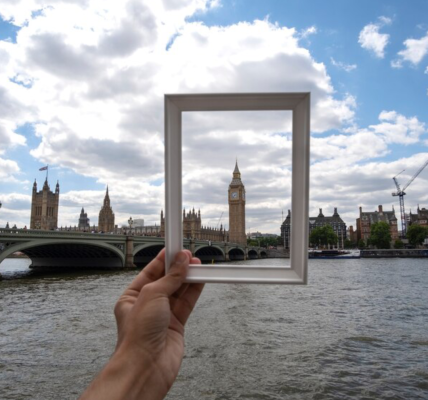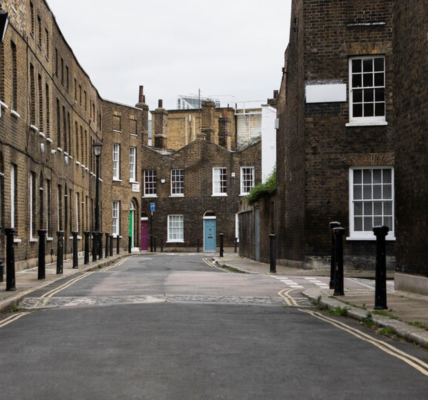The Art of Cartography: How Maps Tell the Story of London
The Art of Cartography: Exploring London Through Historical Maps
Discover the significance of cartography in understanding London’s history and development, featuring insights from the London Topographical Society’s rich collection of maps.
Maps are more than mere navigational tools; they are intricate artworks that encapsulate the essence of a place and its history. In a city as complex and storied as London, maps serve as vital records of urban development, social change, and cultural evolution. The London Topographical Society (LTS) plays a pivotal role in preserving and promoting these cartographic treasures, enabling us to explore the multifaceted narrative of London through the ages. In this blog, we will delve into the art of cartography, examining how maps tell the story of London and the significance of the LTS in this endeavor.
The Historical Significance of Maps
Maps have been integral to human civilization for centuries, serving not only as tools for navigation but also as reflections of societal values, priorities, and knowledge. In the context of London, historical maps reveal the city’s transformation from a Roman settlement to a global metropolis, capturing the dynamic interplay of geography, economy, and culture.
Early maps of London, such as those created during the medieval period, often focused on religious and political landmarks, reflecting the power structures of the time. As the city expanded, cartographers began to include more detailed representations of streets, buildings, and neighborhoods, allowing for a more comprehensive understanding of urban life.
The evolution of cartography in London mirrors the city’s own growth. Each map serves as a snapshot of a specific moment in time, providing insights into the social, economic, and environmental factors that shaped the city. By studying these maps, we can trace the historical narrative of London and appreciate the complexities of its development.
Notable Maps in the London Topographical Society Collection
The London Topographical Society boasts an impressive collection of historical maps that illustrate the city’s rich cartographic heritage. Some of the most notable maps include:
Agas Map (1561): One of the earliest detailed maps of London, the Agas Map provides a fascinating glimpse into the city during the Elizabethan era. It depicts the layout of streets, buildings, and significant landmarks, showcasing the bustling urban life of the time. The map is notable for its artistic representation, featuring illustrations of notable structures and the River Thames.
John Strype’s Map (1720): This map is a remarkable improvement over earlier representations, offering a detailed view of London’s streets and buildings. Strype’s work was informed by extensive research and firsthand observations, making it a valuable resource for understanding the city’s layout in the early 18th century.
Charles Booth’s Poverty Map (1889): As previously mentioned, Booth’s map is a powerful visual representation of socio-economic conditions in London. By color-coding areas based on income levels, Booth provided a unique perspective on urban poverty and inequality, making this map an essential tool for social historians and urban planners.
Ordnance Survey Maps (19th Century): The Ordnance Survey maps are some of the most comprehensive cartographic records of London, detailing the city’s infrastructure, land use, and urban planning. These maps have been instrumental in urban studies, allowing researchers to analyze changes in the city’s landscape over time.
Cartography is not only a scientific endeavor; it is also an art form. The creation of maps involves a delicate balance of aesthetics and functionality, requiring cartographers to present information in a visually engaging manner while ensuring accuracy and clarity.
Historical maps of London often feature intricate illustrations, decorative elements, and artistic flourishes that reflect the cultural context of their time. For example, the Agas Map is adorned with illustrations of notable buildings, ships on the Thames, and even depictions of daily life in the city. These artistic elements enhance the map’s narrative, inviting viewers to explore the story behind the geography.
Moreover, the choice of colors, symbols, and typography in cartography can convey deeper meanings and evoke emotions. A map’s design can influence how we perceive a place, shaping our understanding of its significance and history. The London Topographical Society’s collection showcases a variety of cartographic styles, each offering a unique lens through which to view the city’s past.
The Role of the London Topographical Society
The London Topographical Society is dedicated to preserving and promoting the art of cartography as it relates to London’s history. Through its extensive collection of historical maps, the LTS provides researchers, historians, and the public with access to invaluable resources that illuminate the city’s development.
Membership in the Society offers numerous benefits, including access to exclusive publications featuring historical maps, discounts on past publications, and invitations to events that celebrate London’s cartographic heritage. The Society’s annual general meeting and newsletters keep members informed about the latest research and developments in the field of London history and cartography.
Additionally, the LTS organizes lectures and exhibitions that highlight the artistry and significance of historical mapping. These events provide opportunities for members and the public to engage with experts in the field, fostering discussions about the relevance of cartography in understanding urban history.
The Future of Cartography in London
As technology continues to advance, the field of cartography is evolving, offering new tools and methods for exploring urban landscapes. Digital mapping technologies and Geographic Information Systems (GIS) are revolutionizing how we visualize and analyze historical data, making it easier to understand the complexities of urban development.
The London Topographical Society is embracing these innovations, exploring ways to digitize its collections and make them accessible online. By integrating modern technology with traditional cartography, the LTS aims to reach a wider audience and inspire a new generation of researchers and enthusiasts to engage with London’s rich history.
Conclusion
The art of cartography is a vital component of understanding London’s multifaceted narrative. Through the work of the London Topographical Society, we have access to a treasure trove of historical maps that illuminate the city’s past and inform our understanding of its present. By studying these maps, we can appreciate the layers of history that have shaped London into the vibrant metropolis it is today. Whether you are a historian, a student, or simply a lover of London, engaging with the art of cartography offers a unique opportunity to connect with the city’s rich heritage.
Join the London Topographical Society today and embark on a journey through the fascinating world of historical mapping in London. To learn more about the Society’s role in preserving London’s heritage, check out this article on The Role of the London Topographical Society in Preserving London’s Heritage and explore additional resources on historical mapping.







